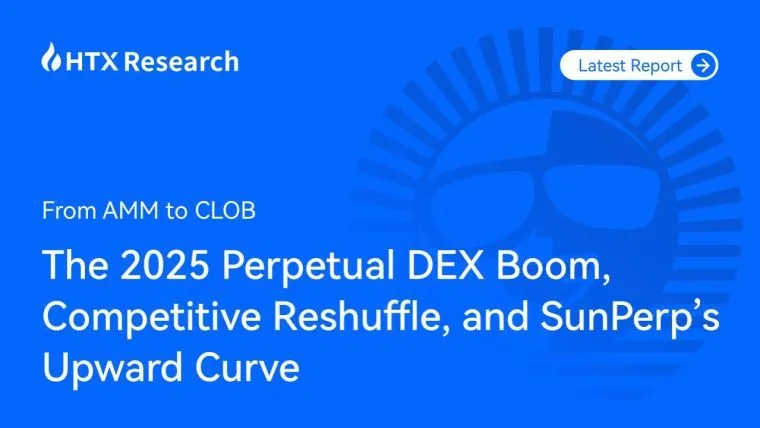Gate Research Institute Daily Report: On October 27, BTC maintained a steady upward trend, with prices operating above the 30MA, indicating a short-term bullish trend; ETH continued its strong upward trend, with prices firmly above the short to medium-term moving averages. The non-liquid supply of Bitcoin has decreased, with approximately 62,000 BTC flowing out of long-term holder wallets; JPYC launched a yen stablecoin and the issuance and redemption platform JPYC EX; Kalshi's trading volume for 30 days surpassed $4 billion, setting a new annual trading volume record.
BTC (3.01% | Current Price 114,969 USDT): BTC has recently maintained a steady upward trend, with prices operating above the 30MA. The short-term moving averages (5MA and 10MA) have formed a golden cross and are diverging upwards, indicating that short-term bullish momentum remains dominant. The current price is approximately $114,900, slightly below the intraday high of $115,536, with a minor short-term pullback, which is a healthy consolidation. On October 24, the net inflow for BTC ETF reached $90.6 million in a single day, with BlackRock's IBIT inflow of $32.7 million and Fidelity's FBTC inflow of $57.9 million.
ETH (6.36% | Current Price 4,188 USDT): ETH continues its strong upward trend, with prices firmly above the short to medium-term moving averages (5MA, 10MA, 30MA). The short-term moving averages show a clear golden cross and maintain an upward divergence, indicating strong bullish momentum. The current price is approximately $4,188, slightly below the intraday high of $4,217, with short-term pullbacks mainly belonging to high-level oscillation consolidation. On October 24, ETH ETF saw a net outflow of $93.6 million in a single day, with BlackRock's ETHA outflow of $101 million.
Altcoins: Most mainstream altcoins have risen across the board, with market sentiment primarily "neutral." The Fear and Greed Index reported 51 today, within the normal range, indicating that investors' risk appetite remains cautious, and previous panic sentiment in the market has eased.
Macro: On October 24, the S&P 500 index rose by 0.79%, closing at 6,791.69 points; the Dow Jones index rose by 1.01%, closing at 47,207.12 points; the Nasdaq index rose by 1.15%, closing at 23,204.87 points. As of October 27, 11:00 AM (UTC+8), the spot price of gold is reported at $4,071 per ounce, with a 24-hour decline of 1.00%.
According to Gate market data, the current price of PAYAI tokens is $0.051, up approximately 107.6% in 24 hours. PayAI Network is an open-source, decentralized AI agent marketplace dedicated to building an AI agent economy, where agents can hire and collaborate with each other 24/7.
The recent strong rise of PayAI tokens is mainly driven by the popularity of the x402 track. As the concept of smart agents (AI Agents) and on-chain automation interactions gains traction, funds are flowing back into the x402 sector, leading to a general rebound in related concept coins. PayAI Network released the x402 development toolkit (SDK) based on the Solana network on October 16, providing developers with the infrastructure to create and deploy on-chain smart agents. The market generally views the project's application potential and ecological extensibility positively, driving the continuous increase in PayAI's market capitalization.
According to Gate market data, the current price of DIA tokens is $0.73, up approximately 75.26% in 24 hours. DIA (Decentralised Information Asset) is a decentralized information asset, an open-source financial information platform that uses cryptocurrency economic incentives to acquire and verify data. Market participants can provide, share, and use financial and digital asset data. DIA is managed by a decentralized community represented by DIA token holders. DIA (governance token) can be used to collect data, verify data, vote on decisions, and incentivize the establishment of the DIA platform.
DIA has recently seen a strong rise, mainly driven by the increasing demand for decentralized data oracles and strategic ecological expansion. As DeFi and RWA applications deepen their reliance on high-precision on-chain data, DIA continues to upgrade its technology stack to enhance the accuracy and verifiability of real-time data. The previously launched trustless oracle suite DIA xReal has been integrated into its verifiable computing infrastructure Lumina, significantly enhancing data processing capabilities and scenario adaptability. Meanwhile, DIA has added a price information stream, VIRTUAL, bringing new data sources and use cases for DeFi integration.
According to Gate market data, the current price of SYND tokens is $0.23, up 20.26% in 24 hours. Syndicate is a blockchain infrastructure project focused on smart sorting and aggregation technology, with its main innovation being the transformation of aggregators and their sorters into smart contracts, thereby achieving programmability at the network level and reducing operational costs.
SYND tokens have recently seen a strong rise, mainly driven by the overall increase in the altcoin sector and positive news about the project. The overall recovery in market risk appetite has led to a return of funds, combined with news that SYND will soon be listed on a new trading platform, further stimulating market buying sentiment. Additionally, the team announced the upcoming launch of the AVS sequence network—a programmable decentralized sequence layer protected by native token staking, compatible with OP Stack and Arbitrum Nitro, providing key infrastructure for Ethereum's expansion ecosystem. Market expectations for SYND's technological value and long-term potential have also become important catalysts for its rise.
According to the latest data from Glassnode, since mid-October, approximately 62,000 Bitcoins (worth about $7 billion) have flowed out of long-dormant wallets, marking the first significant decrease in non-liquid supply since the second half of 2025. Although BTC prices have briefly surpassed $115,000 and overall market sentiment has improved, the selling behavior of long-term holders (LTH) is weakening upward momentum. Data shows that outflows from medium-sized addresses holding between $10,000 and $1 million are the most significant, indicating that some mid-term investors are taking profits or reducing risk exposure.
At the same time, momentum buying has significantly decreased, and new incoming funds have not formed effective support, which may create some selling pressure on BTC prices in the short term. Currently, approximately 82.3% of Bitcoin supply is in profit, which is higher than the year's low (76%), but the trend shows an increase in market profit-taking, which may indicate increased price volatility.
The yen stablecoin issuer JPYC announced the official launch of the issuance and redemption platform JPYC EX and the launch of the stablecoin JPYC, pegged 1:1 to the yen. This stablecoin is backed by domestic savings deposits and government bonds (JGBs). Users can make reservations for issuance or redemption through the JPYC EX platform: after registering on the platform and depositing yen, they can receive an equivalent amount of JPYC in their linked wallet address; sending JPYC back can be exchanged for fiat yen. In the initial phase of the project, transaction fees will be waived to expand usage, and profits will be generated through holding government bond interest.
The launch of JPYC EX marks a substantial step in the infrastructure for yen stablecoins. Unlike the dollar-dominated global stablecoin system, JPYC establishes a compliant and robust domestic stablecoin issuance mechanism through a dual support model of "government bonds + fiat savings." In the short term, this will help promote the application of the yen in on-chain payments, Web3 finance, and cross-border settlement scenarios; in the long term, JPYC's model may become a policy and technical reference for various Asian countries developing domestic stablecoins, accelerating the process of digital currency interconnectivity in the region.
In the past 30 days, the on-chain trading volume of the financial prediction platform Kalshi has rapidly climbed to $4 billion, pushing its annual trading volume to approximately $50 billion, demonstrating the growing activity and scale of prediction markets under mainstream financial participation.
The surge in Kalshi's trading volume not only reflects the growth potential of on-chain prediction markets but also signifies a steady increase in user demand for financial derivatives and prediction tools. With support from traditional financial platforms like Robinhood, Kalshi is gradually evolving from a niche experimental product into a significant mainstream market infrastructure, further strengthening the voice of prediction markets in the on-chain financial ecosystem. In the future, as more mainstream assets and institutions participate, on-chain prediction markets are expected to become an important link connecting social, trading, and financial innovation.
Related: Cryptocurrency Regulatory Landscape: Global Policy Evolution and Market Impact
Original: “JPYC Launches Yen Stablecoin | Kalshi Hits $4 Billion in 30-Day Trading Volume”
免责声明:本文章仅代表作者个人观点,不代表本平台的立场和观点。本文章仅供信息分享,不构成对任何人的任何投资建议。用户与作者之间的任何争议,与本平台无关。如网页中刊载的文章或图片涉及侵权,请提供相关的权利证明和身份证明发送邮件到support@aicoin.com,本平台相关工作人员将会进行核查。




